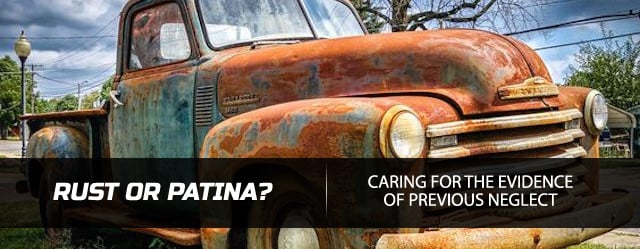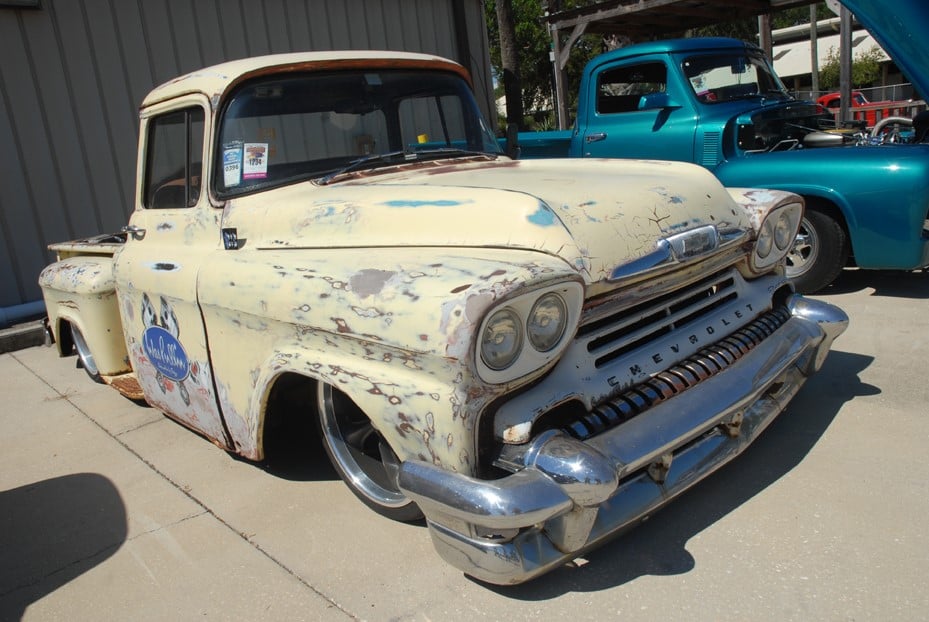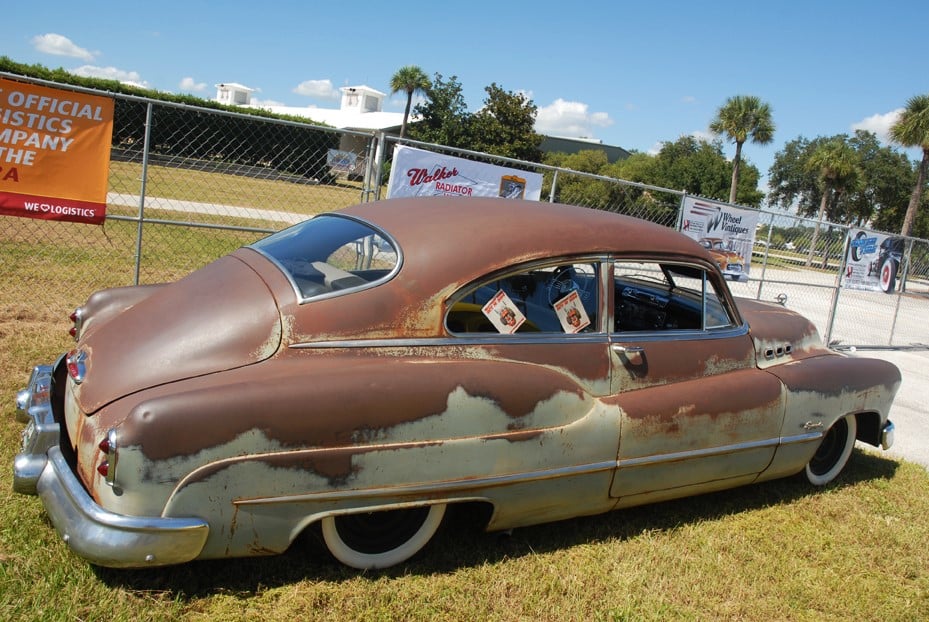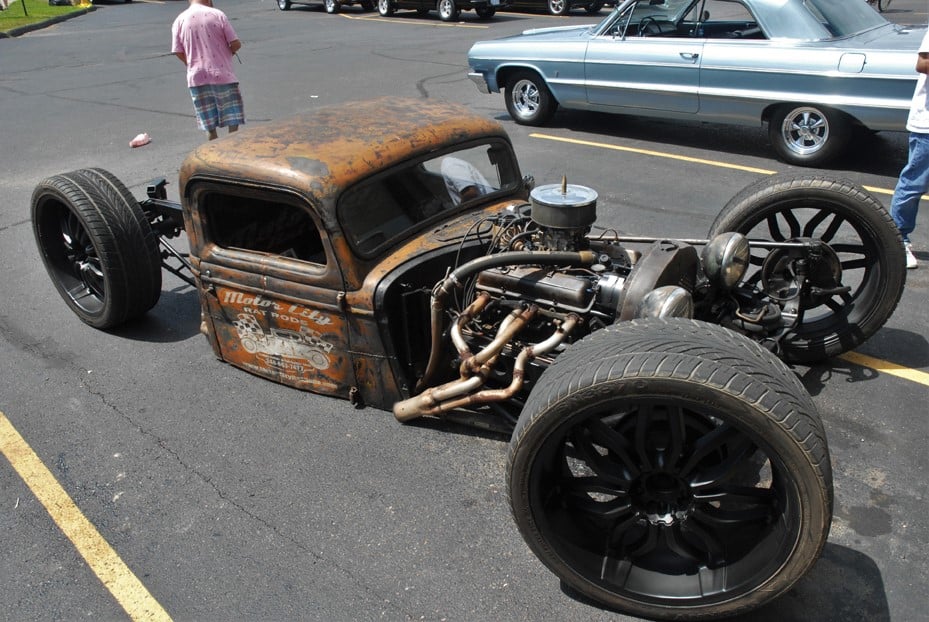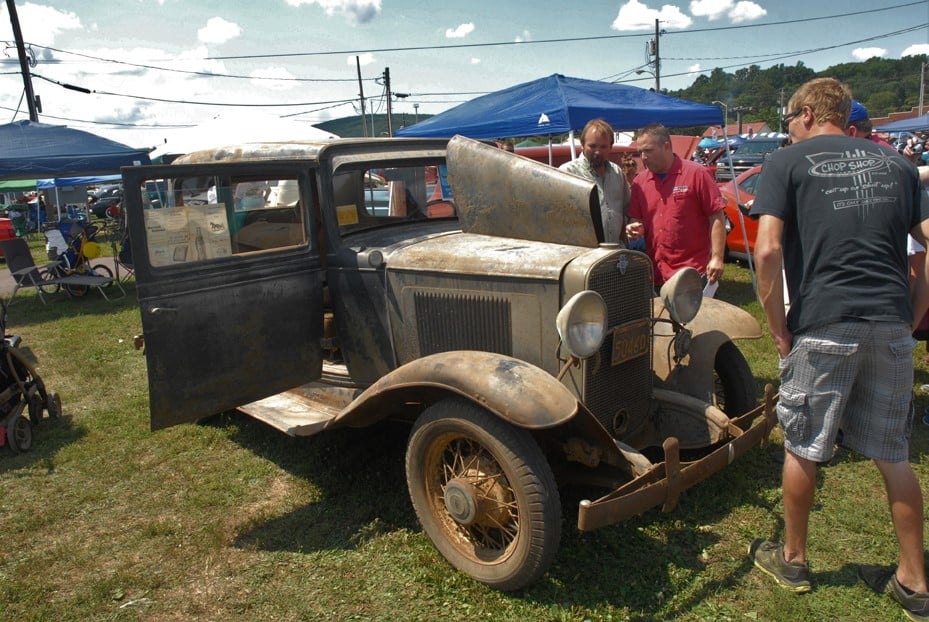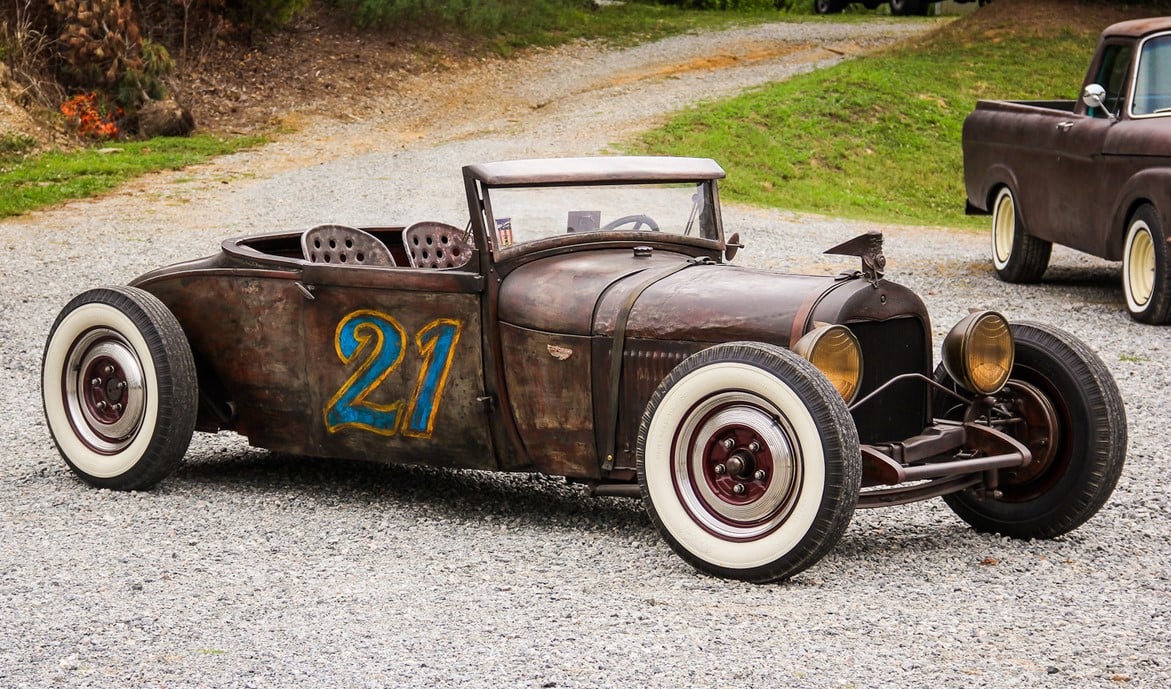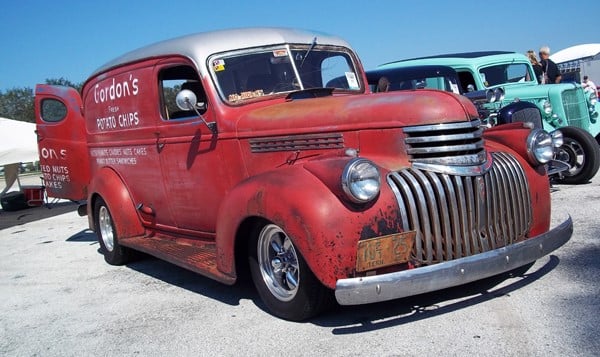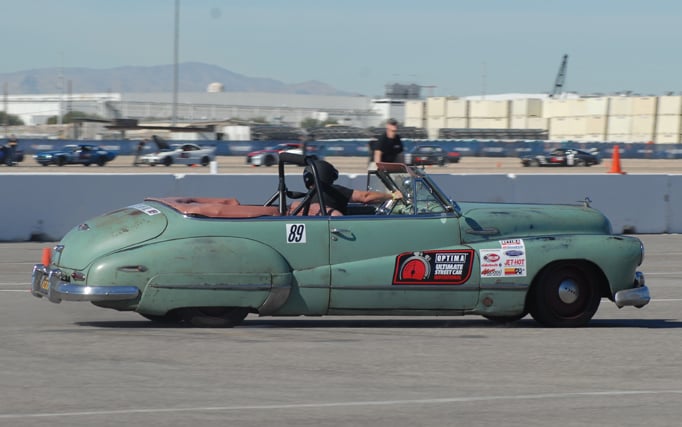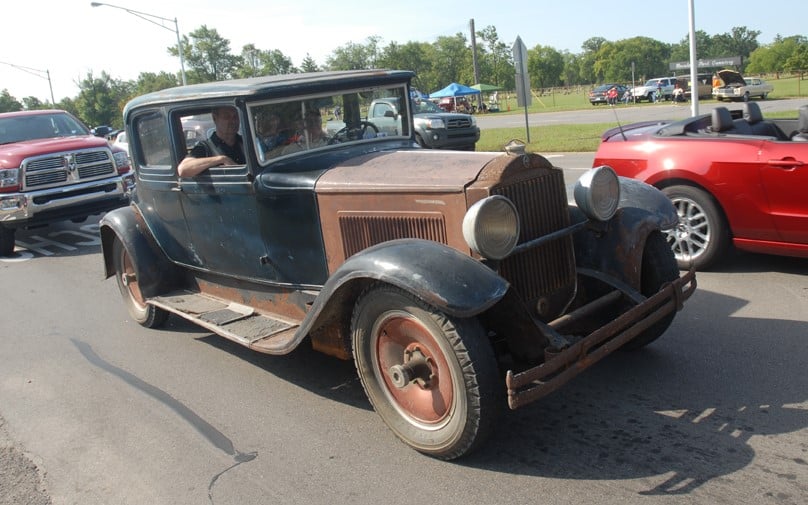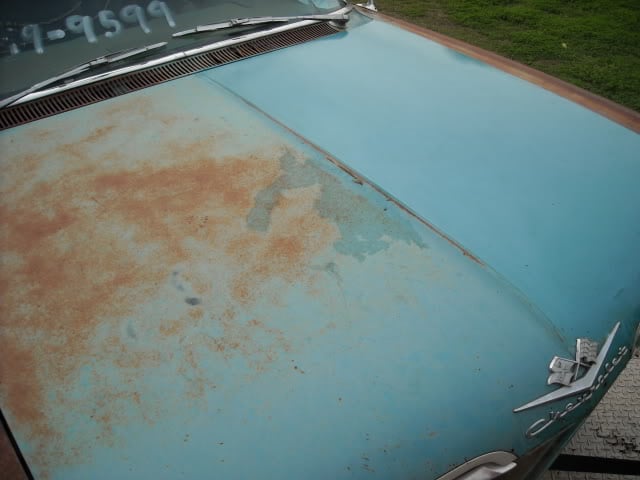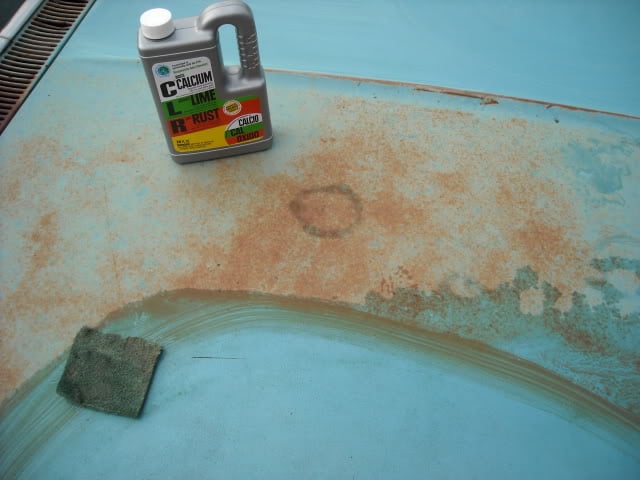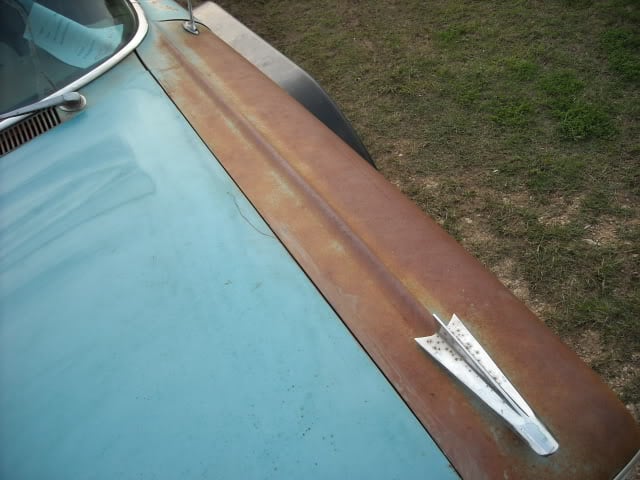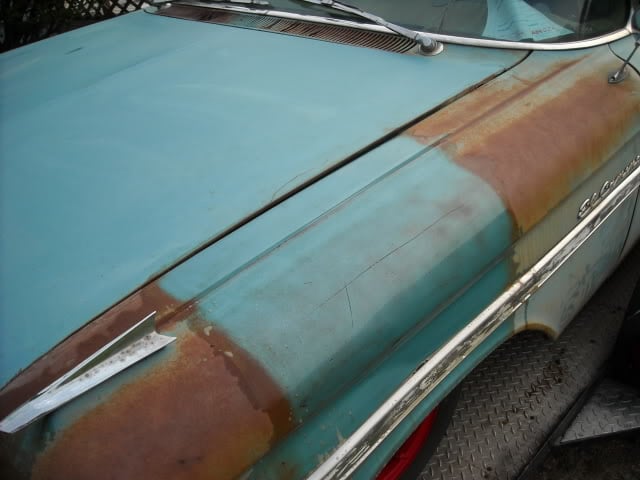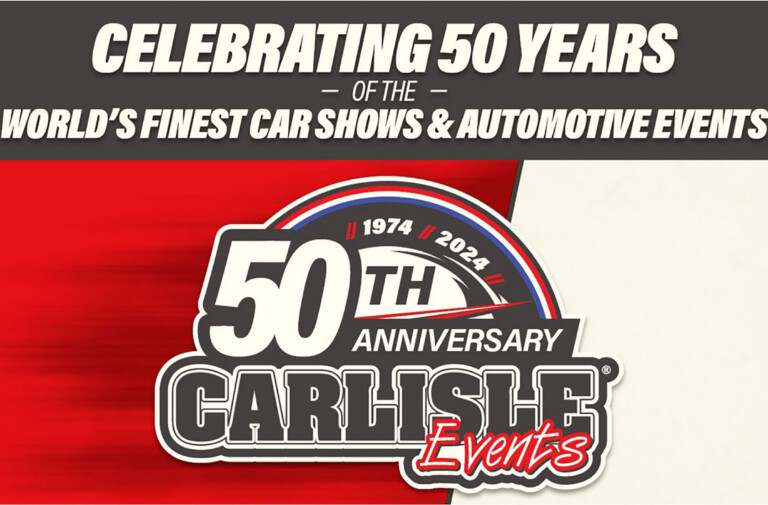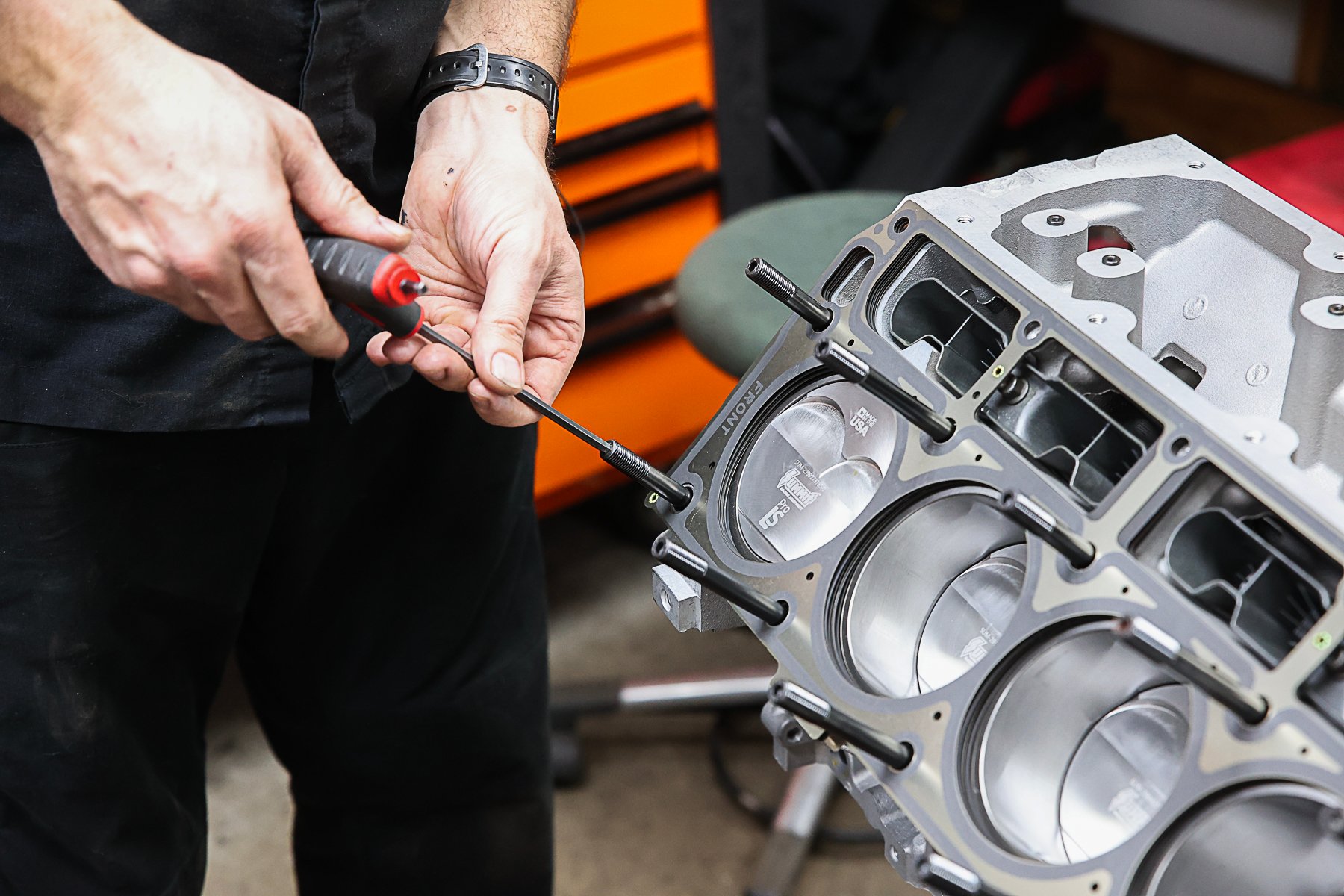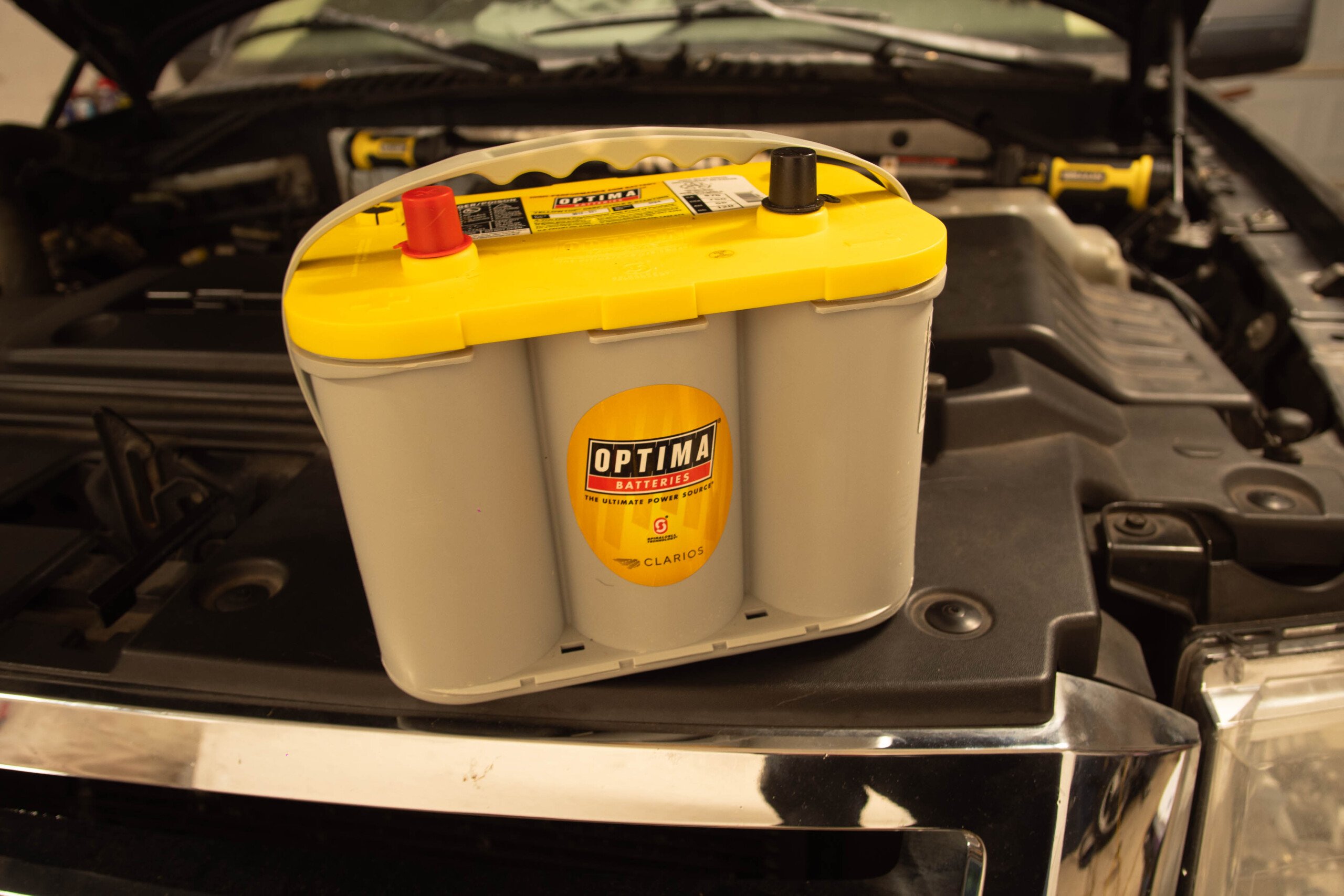When the subject of patina comes up on automotive forums, topics usually range from questioning the original poster’s sanity to tips and techniques used by archeologists to ensure inflicting the least amount of damage to the infected surface.
While it sounds counter-intuitive to try and preserve something that has been slowly ravaged by time and the elements, a quick look around the show field will reveal that “patina” has become a staple of the automotive hobby.
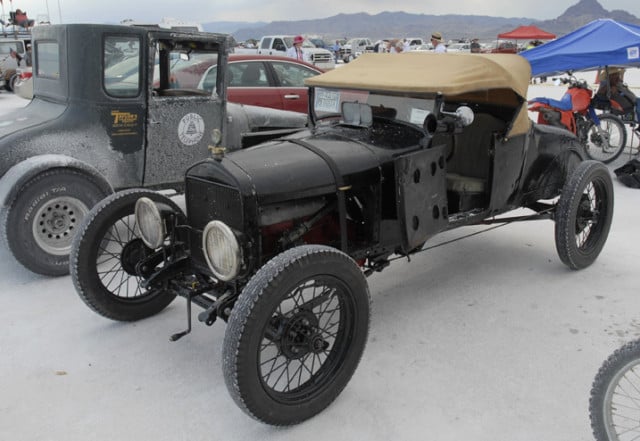
The ’26 Model T uses an era-perfect build to create a total effect. Seeing it on the salt at Bonneville only secures the coolness.
Corrosion Counter-culture
You could say that the movement of rust and dust began as a statement against the increasing number of cars adorned with copious amounts of chrome and billet pieces. Seemingly, every bolt and component was slathered in the shiny stuff and everything else being polished to a super-high gloss made it hard to distinguish where one car stopped and the other began.
When everyone else is trying to be brighter and shinier than the next guy, the best way to stand out and get noticed is to do the opposite. Ask any proponent of patina and they’ll proudly tell you of times that attendees have walked past incredibly adorned autos to get a better look at “the old car”.
As is often the case, when something works at getting the attention of both judges and enthusiasts (as well as magazine editors), it doesn’t take long for others to take note and start using similar techniques. What once stood out from the crowd, soon becomes a movement as many other enthusiasts hop on board. Patina has enjoyed quite a following and interestingly, there are differing views of what constitutes “patina”.
Patina comes in many forms. The truck uses several layers of paints to get the desired effect while the Buick Special uses a lack of paint. Rat rods like this one can even combine modern and vintage cues while the "barn find" movement relies on originality and dust to connect the vehicle to it's history.
Differing Levels
While most may agree that patina is the evidence of previous neglect, the accepted route of how you obtain it has been blurred by several techniques and standing opinions. What began as a stand against the automotive equivalent of icing that is too sweet has transformed into a cottage industry that not only embraces those less shiny, but has also developed ways to achieve it.
Fauxtina is an artificial form of patina. It uses modern techniques to artificially age a vehicle. Airbrushing and using faded lettering helps make the case for age. Some have even air-brushed phony bird poop on their ride! ( '29 Ford image courtesy of Man Made Legends)
Rather than sitting around for another 40 years and letting mother nature do her thing, many have developed “Fauxtina”, the artificial, and abbreviated version of long-term neglect. Whereas Patinites once scoured junk yards and tree-lines searching for those nature-ripened components to complete their builds, now they can simply order parts online. Using information found throughout the ‘net and through various treatments, they can now have the level of wear and tear that matches the amount seen on their car.
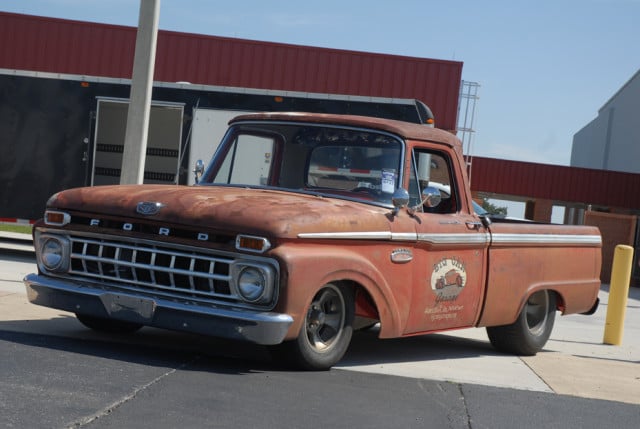
The truck uses cues on the surface, but as you can see, the suspension is upgraded. Patina can be found throughout the entire spectrum of the hobby.
There are even options for those having shiny surfaces on their cars to get an age-old appearance. We recently covered the wrapping of this 1953 Cadillac Coupe De Ville with a patina-based wrap material that covered the nice, shiny exterior paint. The benefit of this type of artificial ageing is that if you ever change your mind, simply peel off the wrap.
One of the major reasons that so many folks opt for a patina'd finish is that they can drive their cars with impunity. This Buick was spotted tearing up the track in Las Vegas during the Optima Ultimate Street Car Challenge while the Packard was roaming Woodward Ave during Dream Cruise.
Others may take a more committed route, actually “touching up” their rides with solvents or liquids to make the surface oxidize more quickly or layering paints on the body panels of their rides and then gently sanding through to expose the varying layers. This gives the appearance of decades of wear, but you need to be careful and use this technique judiciously. Too much of this treatment can make it look artificial and overdone.
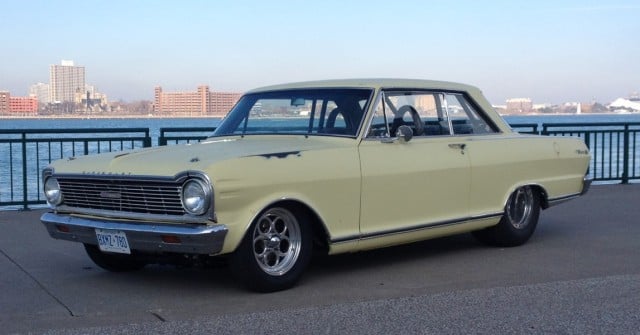
Rob Wade’s ’65 Chevy II has a few parts of its fresh paint worn through to give the car some patina. The trick is to not overdo it.
There are even folks who shun all forms of neglect, save for those examples that have earned the right to not be bright. To these enthusiasts, the only “true” examples of patina are the ones that have occurred naturally, through neglect and not technique. Each scrape, rust stain or ding tells a portion of the car’s history. Together, all of these components comprise the story about this particular car and rather than try and add something to it, their task is to preserve the story of the vehicle.
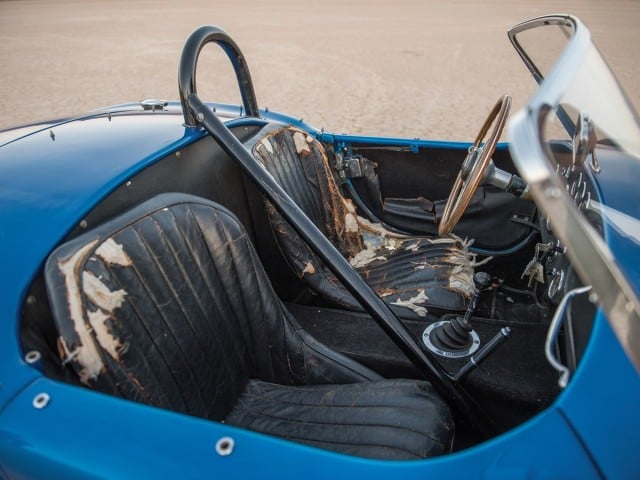
Carroll Shelby’s personal Cobra CSX 2000 recently rang the record books at auction, bringing $13.8 million. Carroll was quoted as saying, “If anyone reupholsters those seats, it’ll be the last day they work here!”
The Larz Anderson Automotive website has this to say about the subject: “The patina of a well-preserved car is its most visible proof of history, as well as the most direct link to its distinguished record of ownership and related stories that make it interesting, otherwise known as provenance.” Scores of threads have been started online about how to properly preserve patina’d vehicles, and love ‘em or hate ‘em, there’s a lot of great information contained within those threads.
Top Forum Quotes on Patina:
- OK now I’m beginning to understand, all this patina stuff needs to be defined; Rule #1 Patina must not include rust. Rule #2 Only faded paint allowed. Aren’t we getting a little picky in our old age?
- Why do ANYTHING? It got the way it is from lack of care, so just keep on doing the same.
- I think the cool thing about “patina” is that mother nature is your painter.
- Rust or no rust, it’s all patina
- Build it right. Keep it for twenty years and the scars will write a book.
- If I was going to spend money on paint, I would like it to look nice. Of course I don’t normally achieve nice soooo…
- If the thing is truly a beater and it all blends together like a $500 car should it’s OK. It’s dumb when you are sporting a $50,000 or more build and decide to call it finished with 90% of the paint missing.
- You can’t buy old…. your car earns it.
- Another preserving rust thread…….yawn……..think I’ll go watch the Kardashians
The patina of a well-preserved car is its most visible proof of history, as well as the most direct link to its distinguished record of ownership and related stories that make it interesting, – Larz Anderson Automotive Museum
As you would think, preserving faded paint is entirely different than treating paint that has faded. Whereas bringing back faded paint seeks to restore the paint to its former glory, preserving “patina” seeks to seal the surface from any more change. And yes, that also includes improvement.
That is why there are so many threads asking how to handle the faded, flaky paint found on so many rides. Clear coat is a great way to seal the surface of the paint, but many recommend using a matte-finish clear so as not to give the surface an artificially shiny coating. Others take a simpler route and suggest that it has taken 30-40 years of neglect to get the surface condition that we’ve come to adore, why start fussing over it now?
While it’s hard to argue with that logic, there ARE a few things that you can do to actually put patina in its best light. One thing that we found interesting was using a product called CLR to help remove rust stains and bring the car’s natural color back. ChevyTalk.org member “SKIM” recently shared in a thread about patina preservation how he used the product to great success. By mixing the solution with water and using a scouring pad, he was able to remove the brown stain from the surface of the paint on his 1959 El Camino while not affecting the finish or changing the appearance of the rusty spots.
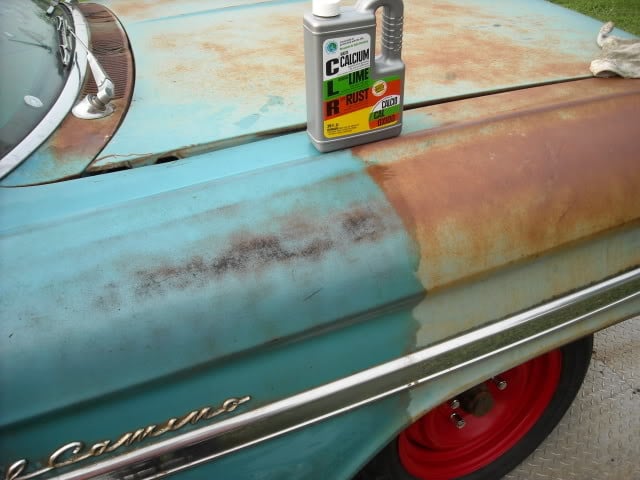
SKIM from ChevyTalk.org shows how using CLR and a scouring pad removes the rust stain and lets the color show. Even thin, faded paint looks better than rust. (Photo: HAMB)
Of course, as we all know, rust never sleeps and eventually, it will continue to grow and reclaim the surfaces that you’ve recently cleaned. At that point, even routine cleaning with mild soap and water will ward off rust better than the years of neglect that chronologically treated the surface prior. Beyond that, and if you wanted to freeze-frame the finish of the vehicle, you could use a product like Renaissance Wax to seal the surface and others even suggest linseed oil. The addition of oils is not recommended if you intend on painting the car at some point as they could wind up under the new paint and prohibit adhesion.
It's hard to imagine there's any color under that rust, but by mixing water and CLR (4:1 ratio) and scrubbing with a scouring pad, you can see how the rust simply wipes away. Impressive! (Photos: www.chevytalk.org)
Any way you look at it, patina has become a major player on the show fields of our lives. The variety of different ways to obtain it and the full spectrum of autos where it can be found ensures that the story is always an interesting one. No matter whether it is truth, or fiction.



